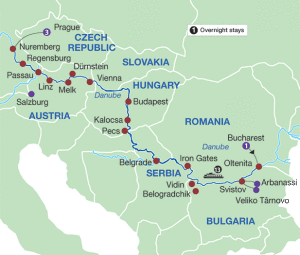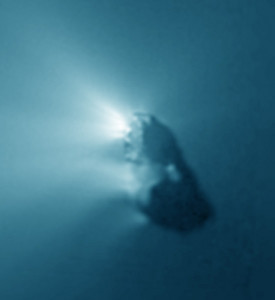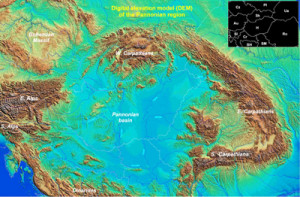Pannonian Plain
Milkovic, Veljko
Veljko Milkovic is a Serbian inventor from Novi Sad. For the past twenty years, he has been claiming that Atlantis is now at the bottom of the Danube, “more precisely, between Novi Sad, at the foot of the Petrovaradin fortress and Srem.”
 To support his claim “Milkovic also collected a large amount of evidence from the bottom of the Danube. During the low water level, numerous stone artifacts with holes, various inscriptions and markings emerged, which are obviously not carved by hand, but perfectly precisely – with a laser.”
To support his claim “Milkovic also collected a large amount of evidence from the bottom of the Danube. During the low water level, numerous stone artifacts with holes, various inscriptions and markings emerged, which are obviously not carved by hand, but perfectly precisely – with a laser.”
His theory is developed in his 2020 book Panonska Atlantida (Pannonian Atlantis) [1932] with some brief notes on the internet(c). He places the Pillars of Herakles at the Iron Gates Gorge on the Danube as have several other commentators. Milkovic places Atlantis itself on the Pannonian Plain, a region where mammoth remains have been found explaining Plato’s reference to elephants.
The same report (a)(b) notes that a team of scientists from the Geological Institute in Bucharest, Romania, are investigating the Deliblato Sands in Serbia in connection with Atlantis.
(a) Tražite je na POGREŠNOM mestu! Veljko tvrdi da se ATLANTIDA nalazi na dnu DUNAVA, poseduje i DOKAZE (novosti.rs) (Serbian)
Danube *
The River Danube is the second-longest river in Europe, which was known to the ancient Greeks as ‘Istros’. It rises in Germany’s Black Forest and after passing through many countries, including four capital cities, it eventually empties into the Black Sea.
A number of researchers have associated the river with Plato’s Atlantis. One of the earliest was Nicolae Densusianu who proposed that Atlantis had been situated in ancient Dacia, his native Romania. Over a century later some of his ideas have been revived by other Romanian commentators such as Adrian Bucurescu and Alexandra Furdui, who also translated Densusianu’s monumental work into English.
Densusian’s nationalism is now frowned upon and there is an understandable suspicion that his modern Romanian supporters may have similar underlying motivations.
There is a gorge on the Danube known as the Iron Gates which provides part of the boundary between Serbia and Romania. Densusianu located the Pillars of Heracles at the Iron Gates, an idea supported by Ticleanu, Constantin & Nicolescu at the 2008 Atlantis Conference, who place Atlantis further west on the Pannonian Plain [750.365]. In 2020, Veljko Milkovic also placed the ‘Pillars’ at the Iron Gates on the Danube and Atlantis in the Pannonian Basin(c) in his book Panonska Atlantida [1932].
However, Ranko Jakovlievic expressed the view that the Iron Gates section of the Danube was the location of Atlantis!
Related to this, is the claim by an anonymous ‘Sherlock’ that Pindar’s Olympian Ode 3 suggested that the Pillars of Herakles had been situated at the confluence of the Seva and Danube rivers near modern Belgrade(b).
A recent book [1742] by Antonije Shkokljev & Slave Nikolovski–Katin also recount an ancient version of the ‘Labours of Hercules’ that took place in the Balkans.
Christian and Siegfried Schoppe locate Atlantis east of the Danube Delta on Snake Island (Zimiinyi) in the Black Sea, an idea now adopted by George K. Weller(a). [Zimiinyi, Ukrainian territory, was occupied by the Russians 25.02.22 as part of their invasion of Ukraine]
Iron Gate(s), The
The Iron Gate(s) is the name given to a gorge on the River Danube that forms part of the boundary between Serbia and Romania. A century ago, Nicolae Densusianu proposed The Iron Gate as the location for the Pillars of Heracles, on the Danube in ancient Dacia, modern Romania.
A recent book [1742] by Antonije Shkokljev & Slave Nikolovski–Katin has related an ancient version of the ‘Labours of Hercules’ based in the Balkan-Danube region.
 Recently, Ranko Jakovljevic expressed the view that the Iron Gate section of the Danube in Serbia was the location of Atlantis.
Recently, Ranko Jakovljevic expressed the view that the Iron Gate section of the Danube in Serbia was the location of Atlantis.
A paper presented to the 2008 Atlantis Conference by Ticleanu, Constantin & Nicolescu [750.375] has the ‘Pillars of Heracles’ located at the Iron Gate but placed Atlantis a little further west on what is now the Pannonian Plain.
>In 2020 Veljko Milkovic also placed the ‘Pillars’ at the Iron Gates on the Danube and Atlantis in the Pannonian Basin(c)(d) in his book Panonska Atlantida [1932].<
This minority view of Atlantis located in Eastern European is seen by a few commentators to be vindicated by the literate Vinca culture(b) of the Danubian region, although the Schoppes see the Vinca people as refugees from their original home in the Black Sea region(a).
For me, all those theories conflict with Plato’s unambiguous statement that the invading Atlanteans came from the west (Tim.25b & Crit.114c). In fact, what Plato actually said was that the invasion came from the Atlantic Sea (pelagos). Although there is some disagreement about the location of this Atlantic Sea, all candidates proposed so far are west of both Athens and Egypt.
(a) https://web.archive.org/web/20190819053842/https://www.black-sea-atlantis.com/schoppe.pdf
Romania
Romania does not automatically leap to mind as a possible location for Atlantis, nevertheless, in 1913 a massive book by Nicolae Densusianu was published in which such a claim was made. The suggestion was made en passant in this large work, which is mainly concerned with the prehistoric evolution of civilisation in the Dacia region of Romania. The 1000-page+ book in English is available in its entirety on the Internet[1597].
The Pannonian Plain, now part of Hungary was formerly part of ancient Dacia. A paper was submitted to  the 2008 Atlantis Conference in Athens by three Romanian researchers, M. Ticleanu, P. Constanin and R. Nicolescu proposing that this region had been the original location of Atlantis. This paper, together with a large number of maps, is now available on the internet(a).
the 2008 Atlantis Conference in Athens by three Romanian researchers, M. Ticleanu, P. Constanin and R. Nicolescu proposing that this region had been the original location of Atlantis. This paper, together with a large number of maps, is now available on the internet(a).
The location of the Pillars of Heracles is also discussed in depth and the author not unexpectedly also locates them along the Danube (Pt3 – Ch.XVI). It is noteworthy that in ancient times the Danube was called Okeanos Potamos.
To what extent nationalistic motives were the moving force behind this noteworthy tome is difficult to ascertain, but the possibility should be borne in mind. However, his excessive nationalism, was popular during the communist regime, but is now deemed unacceptable and his work discredited.
Nevertheless, interest in Densusianu and aspects of his theories have seen a resurgence in books from researchers such as Adrian Bucurescu and Alexandra Furdui.
>A cache of Roman coins was discovered in Transylvania in 1713. Originally accepted as genuine they were later, in 1868, denounced as forgeries. Now they are again being considered genuine. The debate centres on the image on the coins of Emperor Sponsian of whom no other record is known. It has been remarked that “at that time the bar for being an emperor was very old(b).<
In the meantime, neighbouring Bulgaria had seen the unearthing of remarkable artefacts, including gold jewellery, dating to 3000 BC and is now claiming the discovery of rock temples in the Rhodope Mountains that are a thousand years older than the Mesopotamian and Egyptian civilisations. Watch this space.
Panchaea
Panchaea was an island in the Indian Ocean first mentioned by the Greek philosopher Euhemerus in the 4th century BC. It is conventionally assumed to be fictional(b) as it shares many of the characteristics of Plato’s Atlantis.
>The excellent Theoi.com website(c) offers all the classical references to Panchaea.<
Nevertheless, Thérêse Ghembaza has boldly proposed(a) that Meroë on the Upper Nile, which can be loosely described as an island, was the Panchaea described by Diodorus Siculus and was, by extension, Plato’s Atlantis.
>The Third Atlantis Conference held on Santorini in 2011 saw a paper from geologist Mircea Ticleanou propose that Panchaea had been located on the Pannonian Plain, an idea supported in a 2018 posting(d).<
(a) http://www.antiqua91.fr/panchea_en.html
(b) https://www.jasoncolavito.com/panchaea-the-other-atlantis.html
(c) PANCHAEA (Pankhaia) – Fabulous Indian Ocean Island of Greek Legend (theoi.com) *
Halley’s Comet
Halley’s Comet is named after Edmond Halley (1656-1742) who correctly  predicted its periodicity and that it would return after his death in 1759. Bill Arnett has advised that “The average period of Halley’s orbit is 76 years but you cannot calculate the dates of its reappearances by simply subtracting multiples of 76 years from 1986. The gravitational pull of the major planets alters the orbital period from revolution to revolution. Nongravitational effects (such as the reaction from gasses boiled off during its passage near the Sun) also play an important, but smaller, role in altering the orbit. Between the years 239 BC and 1986 AD the orbital period has varied from 76.0 years (in 1986) to 79.3 years (in 451 and 1066).“(q)
predicted its periodicity and that it would return after his death in 1759. Bill Arnett has advised that “The average period of Halley’s orbit is 76 years but you cannot calculate the dates of its reappearances by simply subtracting multiples of 76 years from 1986. The gravitational pull of the major planets alters the orbital period from revolution to revolution. Nongravitational effects (such as the reaction from gasses boiled off during its passage near the Sun) also play an important, but smaller, role in altering the orbit. Between the years 239 BC and 1986 AD the orbital period has varied from 76.0 years (in 1986) to 79.3 years (in 451 and 1066).“(q)
In 1694 Halley proposed(f) that Noah’s Flood had been caused by a cometary impact, a suggestion for which he was censured by the Royal Society. However, he was rather off the mark when he was the first to propose a ‘hollow Earth’ in 1692(c).
Although the comet’s average orbital period is 76 years, it has been as high as 79.3 years. The nucleus of Halley’s Comet is approximately 5x5x10 miles but has a very low density. The earliest observation of the comet was noted in 240 BC by the Chinese, although there is now a suggestion of 466 BC being the earliest reference in ancient Greek records(e). It has also been famously recorded on the Bayeux Tapestry, mentioned in the Talmud and frequently associated with the Star of Bethlehem(h).
A more recent suggestion has been that a fragment of HC hit the Earth in 536 AD lowering temperatures globally causing drought, famine and disease(g).
Polish Professor Kamienski considered the biblical mention of ‘an angel with a sword’ (1Chron 21.16) to be a reference to Halley’s appearance around 1010 BC. However, Kamienski dated another close encounter with Halley’s Comet, which led to the destruction of Atlantis, to circa 9550 BC. In a similar fashion, the historian Donald V. Etz in 1986(b) argued that Isaiah 14.12-15 was possibly inspired by the appearance of the same comet.
 Halley’s comet was considered a harbinger of doom as its appearance seemed to eerily coincide with various disasters, both natural and military.
Halley’s comet was considered a harbinger of doom as its appearance seemed to eerily coincide with various disasters, both natural and military.
In 1956, Kamienski then entered the contentious matter of the date of the Trojan War, which he proposed had ended circa 1165 BC and suggested that it may have coincided with the appearance of Halley’s Comet!(o)
Halley’s Comet, in fact, comets generally, were considered to be harbingers of doom, as their appearance seemed to eerily coincide with various disasters, both natural and military.
In 1456, Pope Calixtus III excommunicated the comet as an agent of Satan. This appears to have been theologically unsound as the comet was never a member of the Church in the first place. Amazingly, comets have continued to reappear, obviously concurrent with a least one of the daily earthbound calamities that is our lot.
The French astronomer Nicolas Camille Flammarion predicted that the appearance of Halley’s Comet in 1910 would fill the earth’s atmosphere with toxic gas and kill all life on earth! Obviously, nothing catastrophic happened then nor on its next visit in 1986.
Another suggested date for Halley’s Comet leading to the demise of Atlantis is 1628 BC put forward by David Wiseman, a Bible teacher(d).
Jean Silvain Bailly was the first to compute the orbit of the comet and coincidentally also wrote on the subject of Atlantis at the end of the 18th century.
Col. Braghine theorised that Atlantis was destroyed as a result of a close encounter of the Earth with Halley’s Comet and similarly the Polish Professor Kamienski suggested that a large chunk of Halley’s Comet fell into the Gulf of Mexico in 9542 BC. Kamienski has also written very technical paper(a) on the 2320 BC appearance of the comet. The American astronomer Jack Hills, an asteroid specialist at the Los Alamos National Laboratory holds similar views to Kamienski.
>The earliest claimed sighting of Halley’s Comet appears to have come from Dr Manish Pandit, who has proposed that it was seen as early as 3067 BC(p).<
Halley’s Comet has also been blamed for the disappearance of the Pannonian Lake, another proposed Atlantis location.
Jürgen Spanuth thought that Phaëton was a fragment of Halley’s Comet. Two other followers of Spanuth, Günter Bischoff and Walter Stender have written extensive papers, in German, on a meteorite impact with Northern Europe around 1220 BC, which they also identified as Phaëton(j)(n). The same interpretation has been applied specifically to Lake Chiemgau in S.E. Bavaria and is expanded on in papers by Barbara Rappenglück among many others(k)(l)(m).
In a 2018 paper(i), Charles A Rogers associates Phaëton with Halley’s Comet, dating the close encounter to 1404 BC. He goes further, linking the ‘pillar of light’ in Exodus with both Halley’s Comet and the eruption of Thera. He then proceeds to connect this event(s) with the destruction of Atlantis on the Gulf of Gabes at the mouth of the River Triton!
Clube & Napier in The Cosmic Winter [290]suggested that the Biblical Exodus story contains the earliest reference to Halley’s Comet. The controversial Jeffrey Goodman also links a number of Biblical events with cometary encounters in The Comets of God [1687].
For trivia lovers, I note that both the birth (1835) and death (1910) of the writer Mark Twain coincided with appearances of Halley’s Comet!
(a) http://articles.adsabs.harvard.edu//full/1956AcA…..6….3K/0000003.000.html
(b) https://www.jstor.org/pss/1518410
(c) https://dioi.org/kn/halleyhollow.htm
(d) See Archive 3339
(e) https://baringtheaegis.blogspot.ie/2014/07/a-recorded-ancient-hellenic-sighting-of.html
(f) https://www.jasoncolavito.com/halley-on-noahs-comet.html
(g) https://www.q-mag.org/fragment-of-halleys-comet-hit-earth-in-536-a-d-causing-drought-and-famine.html
(h) https://ufosightingshotspot.blogspot.ie/2017/05/earth-entering-debris-field-from.html
(i) https://www.academia.edu/36855091/Atlantis_Once_Lost_Now_Found
(j) https://www.efodon.de/html/archiv/vorgeschichte/bischoff/2003-SY5%20bischoff_phaeton.pdf
(k) http://impact-structures.com/news/Stoettham_c.pdf
(m) https://guginew.blogspot.ie/2011/09/fall-of-phaethon-greco-roman-geomyth.html
(o) Atlantis, Volume 10 No. 3, March 1957
Pannonian Plain
The Pannonian Plain or Basin including the Great Plain of Hungary is a  large feature in central and Eastern Europe that had been an inland sea in prehistoric times(b). It was formerly part of the ancient Roman province of Dacia. A paper was submitted to the 2008 Atlantis Conference in Athens by three Romanian researchers, M. Ticleanu, P. Constanin and R. Nicolescu proposing this region as the original location of Atlantis. This paper, together with a large number of maps, is now available on the internet(a).
large feature in central and Eastern Europe that had been an inland sea in prehistoric times(b). It was formerly part of the ancient Roman province of Dacia. A paper was submitted to the 2008 Atlantis Conference in Athens by three Romanian researchers, M. Ticleanu, P. Constanin and R. Nicolescu proposing this region as the original location of Atlantis. This paper, together with a large number of maps, is now available on the internet(a).
The Pannonian theory should be studied in conjunction with the substantial work of Nicolae Densusianu who proposed in 1913 that the Pillars of Heracles had been situated on the Danube, as well as the more recent views of Ranko Jakovljevic who also proposes a Danubian solution to the Atlantis mystery.
>In 2020, Veljko Milkovic also placed the ‘Pillars’ at the Iron Gates on the Danube and Atlantis in the Pannonian Basin in his book Panonska Atlantida [1932] and in a short paper with maps on the internet(c).<
However, none of them explains the Atlantean invasion of Egypt and Athens coming from the west (Tim.25b & Crit.114c)! In fact, what Plato said was that the invasion came from the Atlantic Sea (pelagos). Although there is some disagreement about the location of this Atlantic Sea, all candidates proposed so far are west of both Athens and Egypt. Furthermore, there is no evidence, or even hint of a suggestion, that any peoples in the Pannonian region had control as far as “Tyrrhenia and Egypt”. Consequently, this Pannonian theory conflicts with the only unambiguous geographical description of Atlantean controlled territory provided by Plato.
